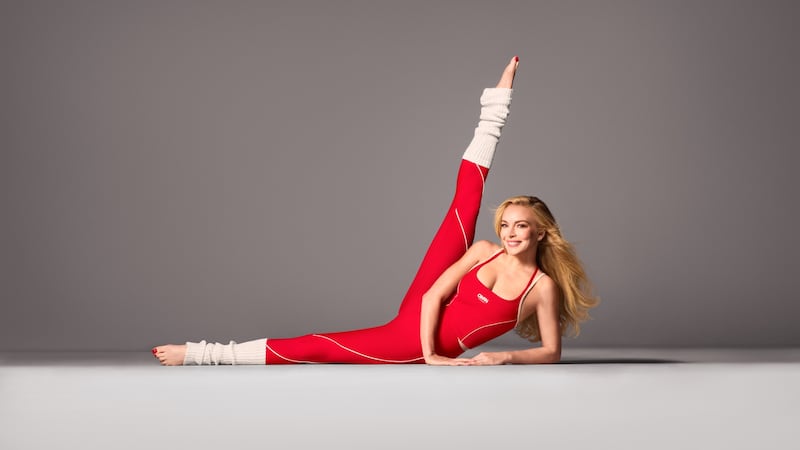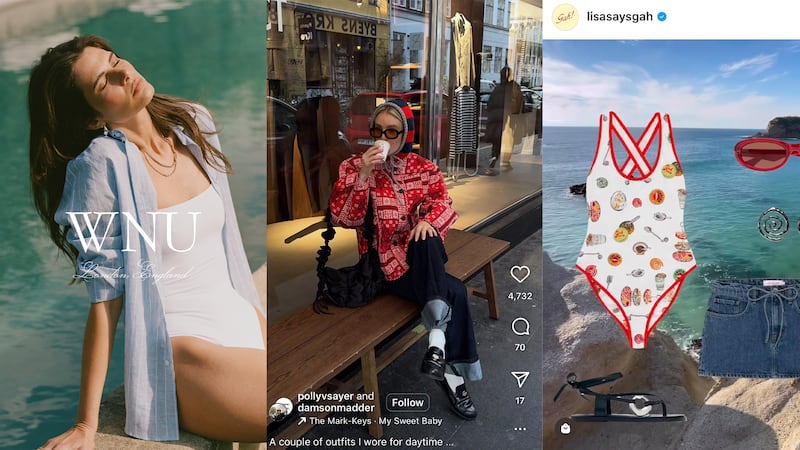Agenda-setting intelligence, analysis and advice for the global fashion community.
At the centre of Everlane’s latest campaign is a hill. A number of stone-faced models in earth tones, drenched in sepia-toned cinematography, surround it; posing, climbing and eventually, sitting around a table on its top. In a whisper, a narrator proclaims, “the hill is an analogy,” going on to draw out a parallel with Everlane’s goal of making “better” clothing
The real uphill battle Everlane is facing, however, is in shifting consumer perception. The brand wants to go from being seen as a basics maker to an affordable luxury label. The “Clean Luxury. Better For You” campaign is meant to be a major step in changing that narrative.
“The hill really represents … the hard work we have been doing and that we continue to do,” said Lisa Perez, Everlane’s vice president of brand. “Over the last few years we’ve been a bit quieter about what we’ve been doing, but the work is always there.”

The campaign, Everlane’s first to focus on its story rather than a product, is also a symptom of a growing shift in DTC marketing. In the 2010s, pioneers in the space relied on social media ads, often featuring product shots with straightforward descriptions, meant to fast track consumers to checkout. They worked to get consumers to buy, but were less effective in getting them to return. Now, with paid social media ads filled with more engaging content, both established players and start-ups are starting to invest in more old-school brand marketing, where storytelling takes precedence. The hope is that immersing shoppers in a brand’s world will make them more likely to come back after they make a purchase.
ADVERTISEMENT
“If most of the marketing activity that you’re doing is just meant to drive performance and is not additive to people’s overall affinity of the brand, that’s going to wear out pretty quickly,” said Emily Heyward, co-founder and chief brand officer of creative agency Red Antler, which has worked with brands like Allbirds and Casper. “We’ve reached peak saturation … and you can’t grow a business anymore by just throwing dollars at performance marketing.”
But regardless of age, most DTC start-ups don’t have the massive marketing budgets of behemoths like Nike that are synonymous with this sort of advertising, primarily designed to generate brand buzz over near-term sales. At the same time, the new standard for start-ups to operate profitably also puts pressure on their ads to deliver results.
To strike that balance, more digital businesses are blending brand marketing with sales-generating tactics. Everlane’s campaign, for example, included an installation of a fake hill in its Los Angeles store, which helped boost foot traffic by 20 percent the following week, Perez said. Brands are also ensuring their marketing has longer lifespans, giving them enough time to build awareness that translates to sales.
Brands need strategies “that in the short term can create efficient top of funnel acquisition, but in the longer term can begin a relationship that’s really about retention,” said Taryn Jones Laében, founder and president of investment firm and advisory IRL Ventures.
Driving Results
The best brand marketing establishes what a brand is about and why consumers should love them — even though that messaging likely won’t immediately push shoppers to check out.
“There’s always a tension with like, how scalable is this? If we do this thing that’s more experiential or more one-off, how do we ensure that we’re still reaching a broader audience with it,” Heyward said.
Still, there are plenty of metrics that indicate how impactful a campaign will be down the line.
Sleepwear label Petite Plume, for instance, launched its first brand campaign for Mother’s Day last May called “Makers of Memories.” It was meant to reflect the brand’s core values: It starred female entrepreneurs like Marina Larroudé, founder of her namesake shoe brand, and Elisa Marshall, founder of upscale coffee chain Maman — Petite Plume is also led by a female entrepreneur — who posed with their children in Petite Plume’s pajamas and shared their favourite memories and reflections on motherhood. Engagement for videos from the campaign on Instagram Reels was double Petite Plume’s average. Fanny Quehe, the brand’s marketing chief, attributes momentum from the campaign for helping drive the company to double sales by the end of the year.
ADVERTISEMENT
“The core of the message was people who are pillars of their communities … and who have family story to tell,” Quehe said. “It really helped us from a ‘getting the message out there’ standpoint in a meaningful way, but that didn’t feel forced.”
Effective brand marketing, however, doesn’t always require highly-produced ads. DTC footwear brand Rothy’s, for instance, partnering with creators on unboxing and styling videos for Instagram and TikTok has helped it remake its image as a more fashion-forward label. It doubles down on those team-ups with in-person events, such as co-hosting a pizza party at Fini restaurant in New York City with Emily Sundberg, the writer behind the Substack newsletter “Feed Me.” That approach contributed to Rothy’s earned media value rising 66 percent year over year in the first four months of 2025, according to influencer marketing platform CreatorIQ.
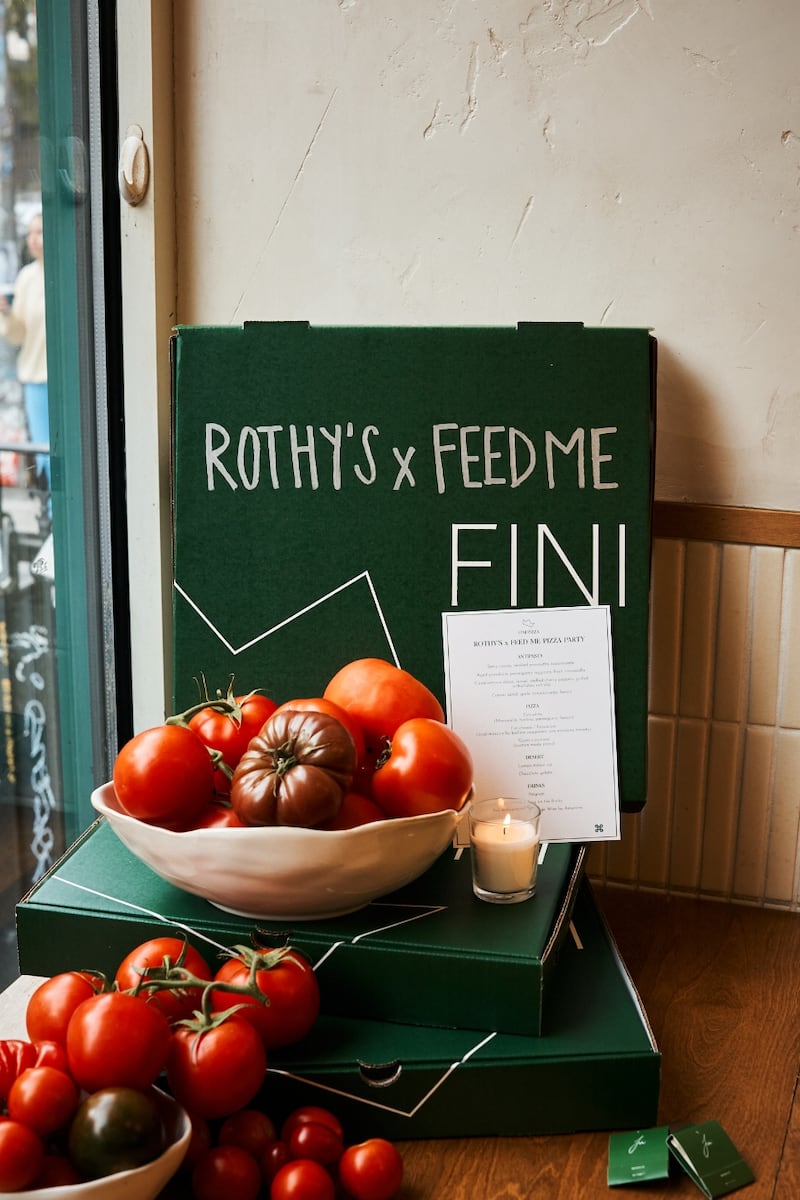
“Instead of going up and down with campaigns, we actually have this ongoing flywheel of activity that sustains the momentum of the brand,” said Jamie Gersch, Rothy’s chief marketing officer. “Whether it’s consumers in our stores or creators in their environment … it has really helped spur this virality of the brand in a different way than traditional campaigns do.”
The Long Game
While a social media ad can be swiped away with a quick tap of a screen, a strong brand campaign should hook consumers for months or even have the potential for further evolution in the future — think Nike’s “Just Do It” ads or Dove’s longstanding “Real Beauty” campaign.
A good place to start is looking at advertising that previously resonated with a brand’s core customers. Inspired by its “Makers of Memories” series, last week Petite Plume launched a campaign called “Family Affair” featuring a new group of tastemakers with their families, including designer Pia Baroncini with her mother and children. The campaign, which also celebrates the brand’s tenth anniversary, highlights “all of the different ways that family can show up,” meant to double down on “what we stand for,” Quehe said.
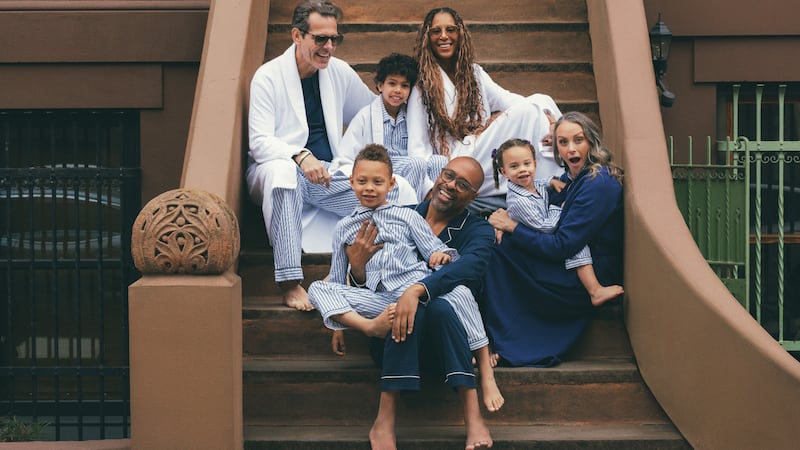
Brands can also find a way to marry product-centric marketing with a compelling narrative. This approach, which doesn’t hinge on generating sales immediately, allows for experimentation with releasing different forms of content over time across channels.
In May, menswear brand Bonobos launched a campaign that focused on its linen offerings, starring podcasting duo Joe Santagato and Frank Alvarez of “The Basement Yard.” Titled “Summer’s Calling,” the ads included a minute-long commercial where a sweaty Santagato and Alvarez call a linen hotline in a desert before stepping out of a phone booth in climate-appropriate henleys and chinos. In June, Bonobos began running ads on The Basement Yard’s podcast to increase awareness of the campaign and its brand, said Krissie Millan, Bonobos’ marketing chief.
“It’s an opportunity to understand who’s going to be gripped by understanding more about Bonobos and how it’s evolved, and who’s going to be gripped by the linen campaign,” Millan said.
ADVERTISEMENT
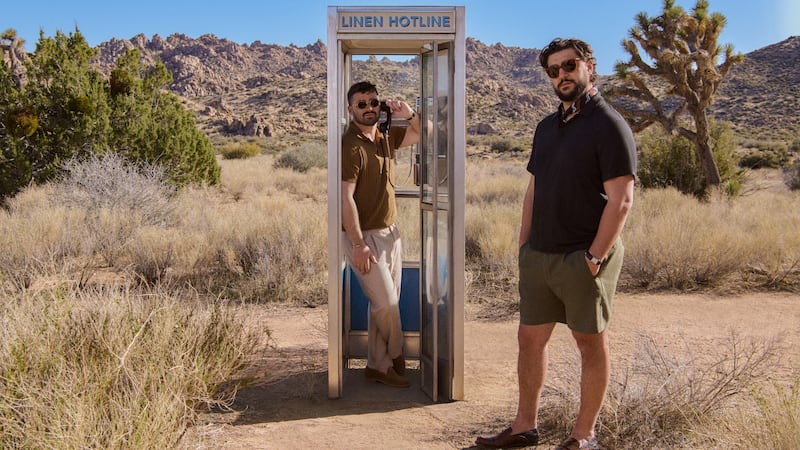
Ultimately, separating brand and product advertising “is to the detriment of long-term business value creation,” Heyward said. Brands today need to invest in marketing that is captivating enough to convince shoppers that what it sells is worth paying attention to, she added.
“Whatever it is you’re trying to say about your brand, especially these days when consumers have so much information and choice, it has to be backed up through product,” Heyward said.


